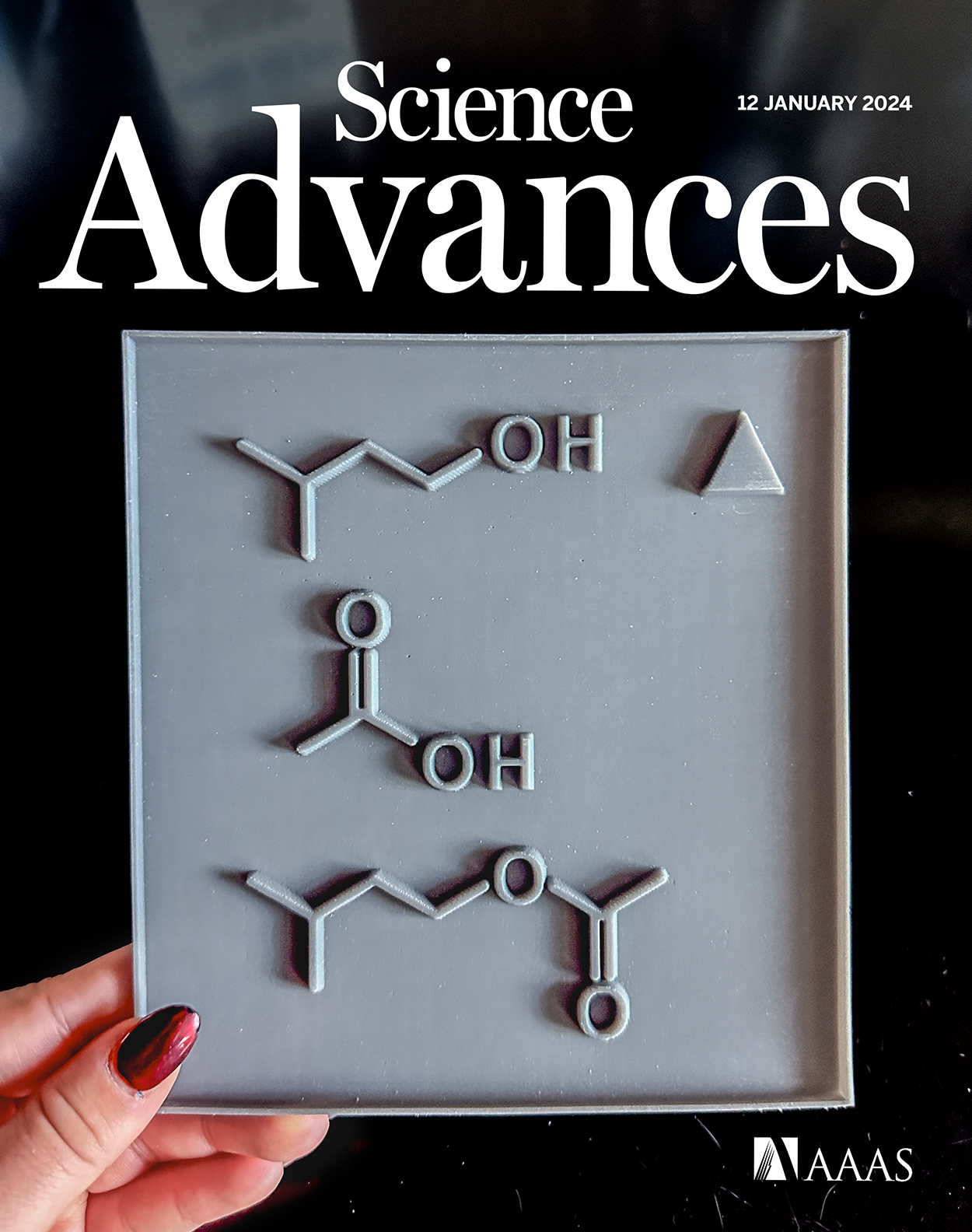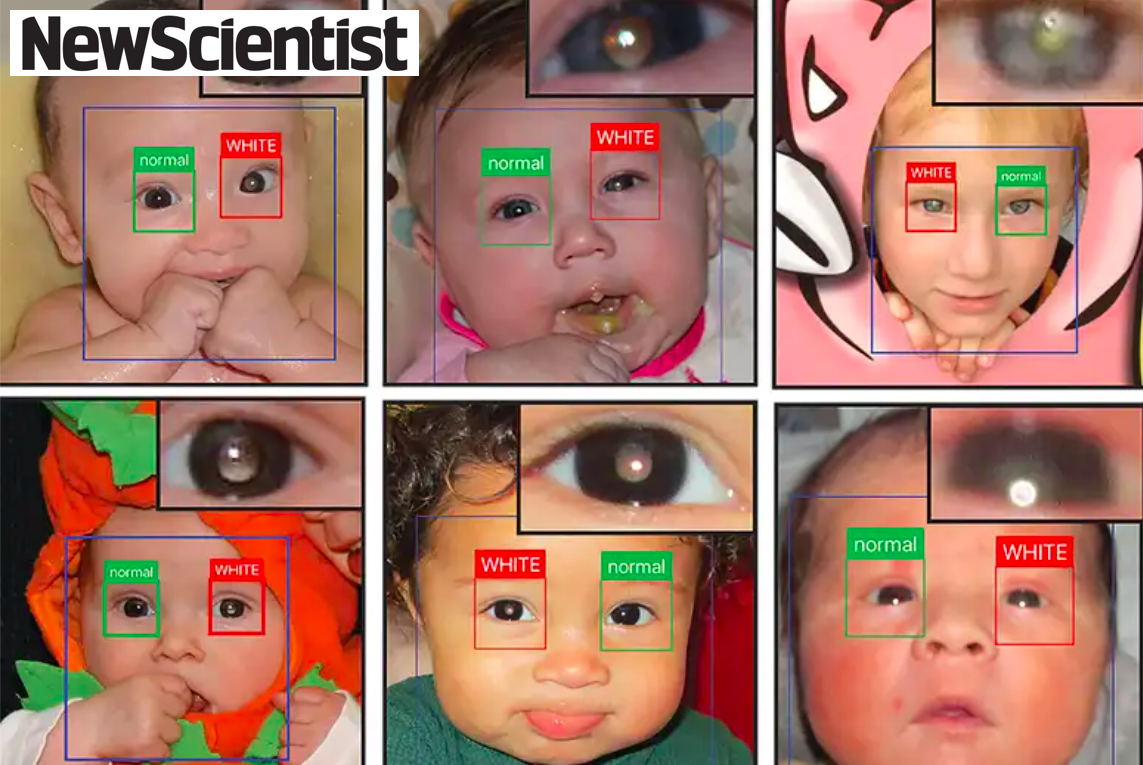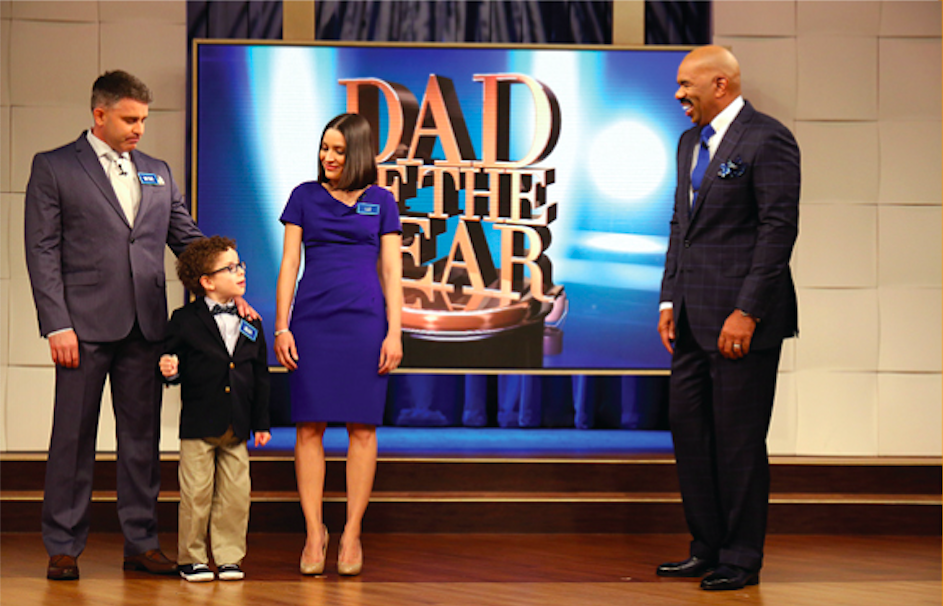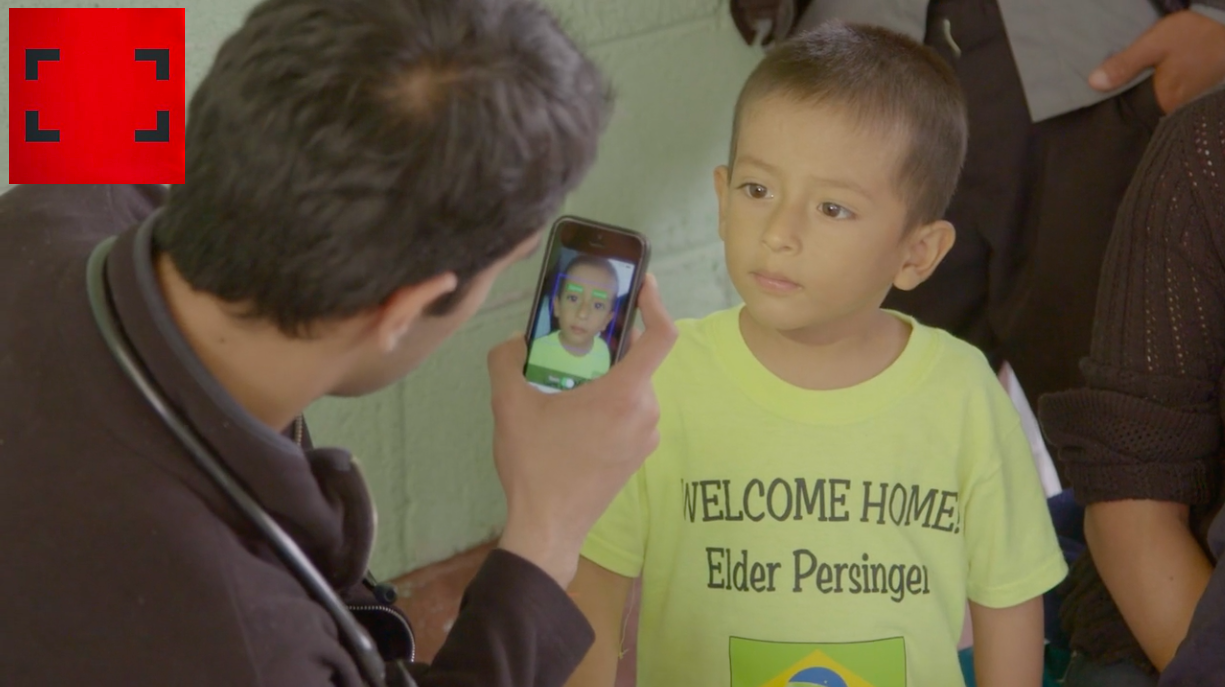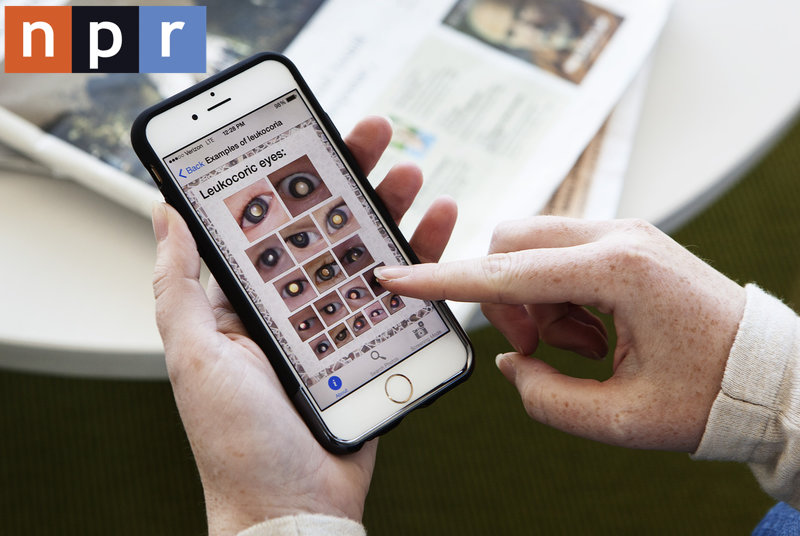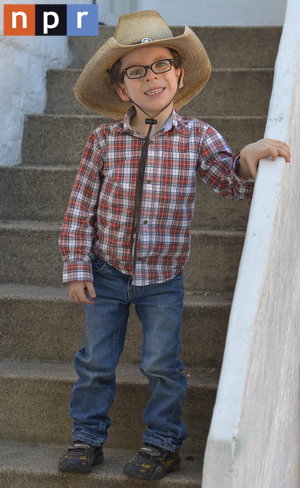- Universal pictures: A lithophane codex helps teenagers with blindness visualize nanoscopic systems
- Increasing access to chemistry for high schoolers with blindness: a program to jump start Central Texas.
- Learning Protein Structures from Edible Gummies
- Science Magazine Podcast – 3D Printed Candy Proteins
- Complete Charge Regulation by a Redox Enzyme Upon Single Electron Transfer
- Cradle app detects eye disease by scanning your photos
- An App That Can Catch Early Signs Of Eye Disease In A Flash
- An app for eye disease, and planting memories in songbirds
- App can detect signs of eye diseases in kids by scanning your photos
- Scientists Create App That Can See Cancer in the Eyes of Kids
- Autonomous early detection of eye disease in childhood photographs
- The Steve Harvey Show: A conversation with Steve Harvey about our computer-assisted leukocoria detector technology.
- CLEAR AS DAY: The Free Tech That’s Saving the Sight & Lives of Guatemala’s Children
- U.S. House Committee on Science, Space, and Technology: Smart Health: Empowering the future of mobile apps
- Devoted Dad Creates App That Can Detect Eye Cancer in Children After His Son Was Diagnosed at 3 Months Old
- Can smartphones and facebook help kids survive eye cancer? | Bryan Shaw | TEDxUtica
- Look Here: Phone App Checks Photos For Eye Disease
- Where We Learn That Artificial Eyes Really Aren’t Round At All
- Faith Drives A Father To Create A Test For Childhood Cancer
- Chemist Turns Software Developer After Son’s Cancer Diagnosis
SCIENCE ADVANCES
VOLUME 10
ISSUE 2
12 JAN 2024
ONLINE COVER A frontlit lithophane graphic of the reaction for isoamyl acetate. To increase the access to high-resolution data for people with blindness, lithophane graphics were developed using 3D-printing. Alonzo et al. report the creation of lithophane codices with greater resolution and an unlimited range of protuberance compared to existing swell form graphics. High school students with blindness were able to accurately interpret lithophanes of esterification reactions, despite little or no prior training in chemistry or experience with lithophanes, resulting in an increased student interest and sense of belonging in science.
Credit: Mayte Gonzalez
A new grant funded by the NIH (SEPA) has been awarded to the Shaw lab to promote inclusion of students with blindness or low vision (BLV) in STEM!
Students with blindness or low vision (BLV) continue to be systemically excluded from chemistry, especially experimental chemistry. While other underrepresented groups face implicit bias across STEM, students with BLV still face explicit bias in chemistry. There are only ~ 10 PhD-level
chemists in the U.S. with early blindness. All are theoretical chemists or educators; none are experimental chemists. Some were told by their high school and college teachers to “drop chemistry”, “switch majors”, “passing is impossible”, “chemistry is too visual” and “too dangerous.” Advances in automated lab technology (robotic reactors), machine vision, and 3D printing will enable BLV students to succeed more easily in chemistry now than in the past.
Baylor faculty in chemistry and special education and three PhD chemists with early blindness are collaborating with five teachers at the Texas School for the Blind and Visually Impaired (TSBVI). Together, we are: (i) developing and testing new methods of making 2D and 3D chemical imagery and data more accessible to blind students at TSBVI, (ii) retrofitting labs (and robots) at Baylor to be accessible to TSBVI students; and (iii) conducting two-day Special Research Experiences (SRE’s) at Baylor University for 30 TSBVI high school students and 5 TSBVI teachers per year.
Update: The robot has arrived in the Shaw lab!



https://onlinelibrary.wiley.com/doi/full/10.1002/anie.202001452
The degree by which metalloproteins partially regulate net charge (Z ) upon electron transfer (ET) was recently measured for the first time using “protein charge ladders” of azurin, cytochrome c, and myoglobin [Angew. Chem. Int. Ed . 2018 , 57 (19), 5364–5368; Angew. Chem . 2018 , 130 , 5462–5466]. Here, we show that Cu, Zn superoxide dismutase (SOD1) is unique among proteins in its ability to resist changes in net charge upon single ET (e.g., ΔZ ET(SOD1)=0.05±0.08 per electron, compared to ΔZ ET(Cyt‐c)=1.19±0.02). This total regulation of net charge by SOD1 is attributed to the protonation of the bridging histidine upon copper reduction, yielding redox centers that are isoelectric at both copper oxidation states. Charge regulation by SOD1 would prevent long range coulombic perturbations to residue pK a’s upon ET at copper, allowing SOD1’s “electrostatic loop” to attract superoxide with equal affinity (at both redox states of copper) during diffusion‐limited reduction and oxidation of superoxide.
https://www.cbsnews.com/video/cradle-app-detects-eye-disease-by-scanning-your-photos/
An app used to detect several different eye conditions is especially helpful in spotting diseases in young children who usually don’t know what normal vision looks like. The app scans photos on your smart phone to identify unusual glares that could be signs of 27 different eye conditions. Omar Villafranca speaks to one set of parents who used the app, Cradle, to catch an early warning sign about their young son’s health.
It’s hard for doctors to do a thorough eye exam on infants. They tend to wiggle around — the babies, that is, not the doctors.
But a new smartphone app takes advantage of parents’ fondness for snapping pictures of their children to look for signs that a child might be developing a serious eye disease.
https://www.sciencemag.org/podcast/app-eye-disease-and-planting-memories-songbirds
Host Sarah Crespi talks with undergraduate student Micheal Munson from Baylor University in Waco, Texas, about a smartphone app that scans photos in the phone’s library for eye disease in kids.
Camera flashes often can make people’s pupils look red in photos. More rarely, flashes can make them appear white – which is usually just a trick of the light but can be a sign of disease, including an eye cancer most common in young children.
https://www.newsweek.com/scientists-app-see-cancer-eyes-kids-1462616
A scientist whose son lost an eye to cancer has helped develop an app that can detect diseases by looking at photos of children.
Bryan F. Shaw, associate professor in the Department of Chemistry and Biochemistry at Baylor University, and colleagues hope the app will save children from going blind. The makers dedicated the study to a child who died during research.
https://advances.sciencemag.org/content/5/10/eaax6363
The “red reflex test” is used to screen children for leukocoria (“white eye”) in a standard pediatric examination, but is ineffective at detecting many eye disorders. Leukocoria also presents in casual photographs. The clinical utility of screening photographs for leukocoria is unreported. Here, a free smartphone application (CRADLE: ComputeR-Assisted Detector of LEukocoria) was engineered to detect photographic leukocoria and is available for download under the name “White Eye Detector.” This study determined the sensitivity, specificity, and accuracy of CRADLE by retrospectively analyzing 52,982 longitudinal photographs of children, collected by parents before enrollment in this study. The cohort included 20 children with retinoblastoma, Coats’ disease, cataract, amblyopia, or hyperopia and 20 control children. For 80% of children with eye disorders, the application detected leukocoria in photographs taken before diagnosis by 1.3 years (95% confidence interval, 0.4 to 2.3 years). The CRADLE application allows parents to augment clinical leukocoria screening with photography.
https://app.criticalmention.com/app/#clip/view/23138402?token=0cc2a6b8-ca43-4ece-a9e4-9d29ea1eda2e
This event was staged by the producers of TSHS as a “Dad of Year” competition.
Bryan Shaw’s app has successfully led to the diagnosis of several different eye conditions in children.
This talk was given at a local TEDx event, produced independently of the TED Conferences. Bryan Shaw shares the story of his son Noah, who developed retinoblastoma- a form of cancer that affects children. After several procedures, Shaw noticed that early photos of Noah had visual cues that could have helped detect his cancer earlier. And so he set out to develop a free app that parents can use to greatly increase the rate at which white eye can be detected.
There’s now free software for your iPhone that lets you check for early signs of certain eye diseases.
The idea for the app comes from a Baylor University chemist named Bryan Shaw. We introduced you to Shaw late last year.
Almost every time reporters go out on assignment, they run across something unexpected that they just can’t fit into the story they’re working on.
When science correspondent Joe Palca and producer Rebecca Davis were in Boston reporting on a boy with a rare form of cancer, they found themselves in the office of Jahrling Ocular Prosthetics, a business dedicated to making artificial eyes.
When Bryan and Elizabeth Shaw learned that their son Noah had a potentially deadly eye cancer, like a lot of people, they turned to their religious faith to help sustain them. But faith is also impelling Bryan Shaw to create software to detect eye cancer in children as soon after birth as possible.
A scientist’s ambitious plan to create an early detection system for eye cancer using people’s home cameras is coming along.
Last fall, we told you about Bryan Shaw’s scheme. He believes parents’ cameras can reveal whether their baby has leukocoria, a white glow coming from the pupil when you shine a light in their eyes. This so-called white eye can be an early sign of retinoblastoma, a rare form of eye cancer.
Children with the disease develop tumors on their retinas at the back of their eyeballs. Shaw wants to make software that will recognize this leukocoria.
Bryan Shaw never expected to write a research paper about a rare eye cancer.
He’s a chemist who works on how metals and proteins interact. But life has a funny way of interrupting the best-laid plans, and now Shaw may be on to a powerful new way to detect retinoblastoma in newborns. Such early detection could mean children with the disease would have a better chance of keeping their eyes and staying alive.
